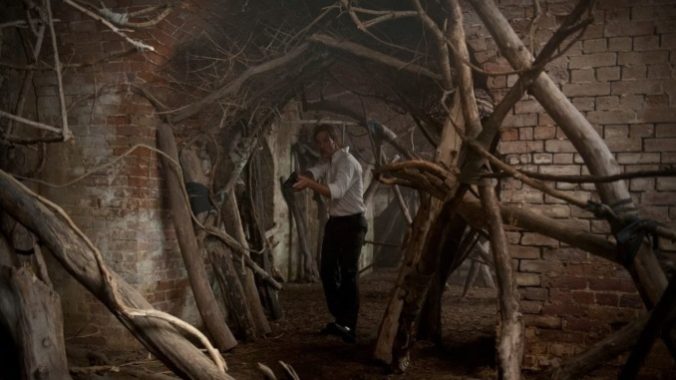A Decade Later, There’s Still Nothing Quite Like True Detective’s Haunting First Season
Photo Courtesy of HBO
When True Detective debuted roughly 10 years ago, there was a fairly specific idea of what “prestige TV” looked like. While this term has frequently been used to denote quality, it’s far more useful as a way to categorize certain tropes that came into vogue on the small screen over the last two and a half decades: stories about anti-heroes, frequently brooding men, presented with filmic aspirations and heavy dosages of self-seriousness. Although there’s obviously a host of popular and critically acclaimed programs that defied these labels back in the late 2000s and early 2010s (and especially now), the previously defined qualities were very much found in the “important” shows that dominated the conversation at that time, such as Mad Men, Breaking Bad, Boardwalk Empire, and others.
On the surface, the first season of True Detective embodies these characteristics almost to the point of caricature. Following a police investigation into a series of grisly murders, our central cops, Rustin Cohle (Matthew McConaughey) and Martin Hart (Woody Harrelson), feel like the perfect ideal of this era’s protagonist. They’re tortured by their place in the world, trapped by masculinity, and thoroughly miserable. Rust, in particular, has a tendency towards grim monologues that make it clear he’s an abject nihilist. The two are shackled to a decades-old mystery that eats away at them both, with its ritualistic details particularly off-putting and obscene.
But while this heavy tone and focus on tortured men wasn’t novel, the series conveyed this dourness in an undeniably compelling way. From its opening moments, there is a pervading sense of dread captured by Cary Joji Fukunaga’s direction, who helmed every episode of this initial run. This bleak worldview completely subsumes us as we’re trapped with these detectives during stifling rides through rural Louisiana, Rust’s self-indulgent, flowery language tuning us into his intense misanthropy. Although these speeches have been (somewhat fairly) described as overwritten, what makes them work is a combination of McConaughey’s intense performance, along with Marty’s understatedly hilarious exhaustion over his partner’s constant bullshit. (If there’s a genuine mar on these scenes though, it’s that series creator Nic Pizzolatto was accused of plagiarizing from Thomas Ligotti’s non-fiction book The Conspiracy Against the Human Race to create Rust’s monologues.)
This corrosive combination of disquieting imagery and beleaguering ideology made it difficult to look away from the pilot, which had the second-highest ratings for an HBO debut at the time. However, as the story went on, it became clear that its formidable direction and performances would wind up being only part of what made this original season so unforgettable, and the series would eventually introduce elements that weren’t particularly common to the self-serious HBO template: the supernatural. Although the first episode gestured towards strangeness with an occult murder, the second doubles down by directly alluding to a seminal work of weird horror fiction, The King in Yellow.
-

-

-

-

-

-

-

-

-

-

-

-

-

-

-

-

-

-

-

-

-

-

-

-

-

-

-

-

-

-

-

-

-

-

-

-

-

-

-

-








































